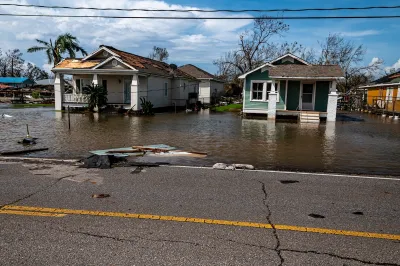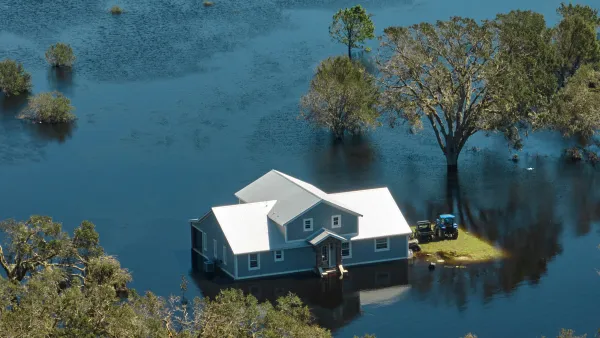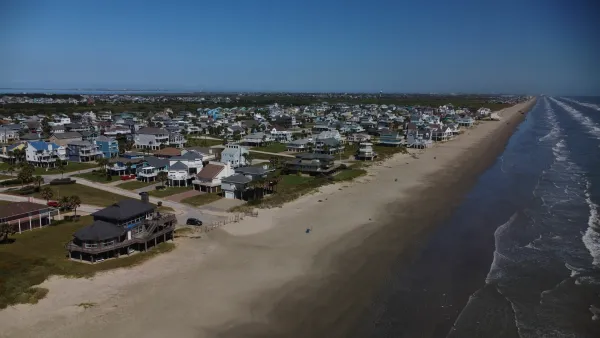Many U.S. cities use ‘routine’ practices like zoning changes and permitting to discourage development in high-risk flood zones.

New research published in the journal Earth’s Future shows that the United States is building fewer structures in floodplains, bucking conventional wisdom that development is running rampant in flood-prone areas, writes Jake Bittle in Grist. A separate paper found that some of the most effective approaches to limiting floodplain development are “routine municipal practices” such as zoning and permitting.
The results reveal that floodplain development is not the intractable problem some have made it out to be. “Developers have built 844,000 units of housing on 2.1 million acres of floodplain — but if they had chosen available parcels at random, they would have built even more than that. This was true for more than 75 percent of all jurisdictions studied, indicating that most governments make at least some substantive attempt to avoid coastlines and riverbanks.”
According to the study, “Indeed, in the 21st century most towns and cities in the U.S. built very little or not at all in flood-prone areas. The vast majority of floodplain construction — the kind that grabs headlines and feeds the pessimistic narrative — has taken place in just two states: Louisiana and Florida.”
Around half of properties that have filed multiple flood insurance claims are in Gulf of Mexico states. “The authors argue that these places need targeted intervention. The state or federal government could provide subsidies to encourage less risky construction, helping offset the economic lure of waterfront construction, or a state could just impose penalties on cities that allow for new builds near the water.”
FULL STORY: The US is finally curbing floodplain development, new research shows

Analysis: Cybertruck Fatality Rate Far Exceeds That of Ford Pinto
The Tesla Cybertruck was recalled seven times last year.

National Parks Layoffs Will Cause Communities to Lose Billions
Thousands of essential park workers were laid off this week, just before the busy spring break season.

Retro-silient?: America’s First “Eco-burb,” The Woodlands Turns 50
A master-planned community north of Houston offers lessons on green infrastructure and resilient design, but falls short of its founder’s lofty affordability and walkability goals.

Test News Post 1
This is a summary

Analysis: Cybertruck Fatality Rate Far Exceeds That of Ford Pinto
The Tesla Cybertruck was recalled seven times last year.

Test News Headline 46
Test for the image on the front page.
Urban Design for Planners 1: Software Tools
This six-course series explores essential urban design concepts using open source software and equips planners with the tools they need to participate fully in the urban design process.
Planning for Universal Design
Learn the tools for implementing Universal Design in planning regulations.
EMC Planning Group, Inc.
Planetizen
Planetizen
Mpact (formerly Rail~Volution)
Great Falls Development Authority, Inc.
HUDs Office of Policy Development and Research
NYU Wagner Graduate School of Public Service




























